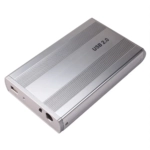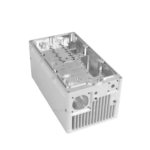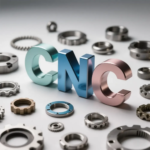Comparison of machine tool layout
The plane of the two guide rails of the flat bed CNC lathe is parallel to the ground plane. The plane of the two guide rails of the inclined bed CNC lathe intersects the ground plane to form an inclined plane, with angles of 30°, 45°, 60° and 75°. Viewed from the machine tool side, the bed of a flat-bed CNC lathe is square, while the bed of a tilt-bed CNC lathe is shaped like a right triangle. Obviously, with the same guide rail width, the carriage in the X direction of the inclined bed is longer than that of the flat bed. The practical importance of its application in lathes is that a greater number of tool positions can be arranged.
Cutting stiffness comparison
The cross section of inclined bed CNC lathe is larger than that of the flat bed of the same specification, that is, it has stronger bending and torsion resistance. The tool of an inclined bed CNC lathe cuts downward from the top oblique of the workpiece. The cutting force is basically consistent with the direction of gravity of the workpiece, so the spindle performs relatively well and is less likely to cause cutting vibration. When a flat bed CNC lathe cuts, the tool and the direction of gravity are basically consistent. The cutting force generated by the workpiece is 90° to the gravity of the workpiece, which can easily cause vibration.
Comparison of processing accuracy
The transmission screw of the CNC lathe is a high precision ball screw. The transmission gap between the screw and the nut is very small, but it does not mean that there is no gap as long as there is a gap when the screw. moves in one direction, it will then move in the opposite direction. When working, backlash will inevitably occur, which will affect the repetitive positioning accuracy of the CNC lathe, thereby affecting the machining accuracy.
The layout of the inclined bed CNC lathe can directly affect the backlash of the ball screw in the X direction. Gravity directly acts on the axial direction of the screw, making the backlash during transmission almost zero. The lead screw in the X direction of a tabletop CNC lathe is not affected by axial gravity, and the deviation cannot be eliminated directly. This is the inherent precision advantage that the design brings to the inclined bed CNC lathe.
Comparison of chip removal capacities
Due to gravity, the inclined bed CNC lathe is not subject to winding tools, which is conducive to chip removal at the same time, combined with the central screw and guide rail protection plate, it can prevent chips from accumulating on the screw; and guide rail. Inclined bed CNC lathes are usually equipped with automatic chip conveyors, which can automatically remove chips and increase the effective working time of workers. The structure of the table makes it difficult to install an automatic chip conveyor.
Automatic production comparison
The increase in the number of machine tools and the configuration of automatic chip conveyors actually lay the foundation for automated production. One person dealing with multiple machine tools has always been the direction of machine tool development. Inclined bed CNC lathe is equipped with milling head, automatic feeding machine or manipulator, automatic loading, complete all chip cutting processes in one clamping, automatic unloading and automatic chip removal, and it becomes an automatic CNC lathe with extremely high working efficiency. The structure of tabletop CNC lathes is at a disadvantage in automated production. Although inclined bed CNC lathes are more advanced than flat bed CNC lathes, their market share lags far behind. Flatbed CNC lathes account for more than 90% of the market share of CNC lathes due to their ease of production and other advantages.
Daguang focuses on providing solutions such as precision CNC machining services (3-axis, 4-axis, 5-axis machining), CNC milling, 3D printing and rapid prototyping services.









